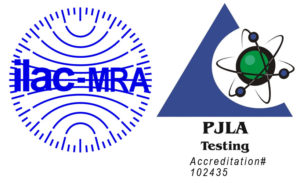Dynamic Texture Analyzer Addresses Poor Sensory Panel …
Food Analysis
by | IFT 1996 | Publications, Food Analysis
Dynamic Texture Analyzer Addresses Poor Sensory Panel / Instrument Correlation
Annual Meeting of the Institute of Food Technologists, Book of Abstracts, 44, (1996)
J.C. CONTI, E.R. Strope, D.J. Rohde, L.D. Spence
Dynatek Dalta Scientific Instruments, PO Box 254, Galena, MO 65656
IFT 1996
Texture is an important property of foods that is sometimes difficult to quantitate. Although sensory panels can be trained to evaluate the various textural properties of a new or modified food, they also suffer from a degree of unsurity associated with the aboption of parameters that are presented during training. It would be beneficial to food scientists and technologists to be able to, at least at the beginning of a food development cycle, to more reproducibly and precisely quantitate the textural properties of foods so that the evaluation by the sensory panels can be utilized closer to the end of the development cycle.
Texture profile analysis recognized the fact the texture was a multi-parameter attribute that could possible be quantitated using a set of classifications first introduced by Szczesniak (1963). In that classification the mechanical aspects of texture included the primary characteristics of hardness, cohesiveness, springiness, adhesiveness and viscosity while the secondary characteristics included brittleness, chewiness and gumminess. Chewiness is the energy required to masticate solid food to a state of readiness for swallowing, somewhat subjective. Gumminess is the energy required to disintegrate a semi-solid food to a readiness for swallowing, again, rather subjective. Adding to the confusion, chewiness was defined as the product of hardness X cohesiveness X springiness while gumminess was a product of hardness X cohesivshermanis relationship, one who is not familiar with the field might conclude that chewiness was actually the product of gumminess X springiness.
This confusion has been present in many publication in literature, see Born (1978). And was addressed in recent letters Szczesniak (1995).
In addition to this confusion of definitions there also has been reported many examples where mechanical analysis of texture does not agree with the results of sensory panels. Eves (1988); Jack (1993); Szczesniak (1987); Lockhanie (1991); Kolioie and Sherman (1996); Bryant et a1 (1995) and Raphaelides (1995). An evaluation of these papers and the testing techniques and parameters that were used to generate the mechanical texture variables lead to two conclusions. First, many of the measurements that were made that resulted in a lack of correlation with sensory panels were made on instruments that were not sensitive enough to differentiate small changes in properties that were in fact differentiable by the sensory panel. Secondly, certain of the parameters that were being evaluated were perhaps being measured using mechanical properties that did not infact properly reflect the characteristics that were being looked for. For example, machine evaluated cohesiveness is defined as the ratio of the positive area (load versus sample dimension) during second compression of that to the first compression. Where as cohesiveness from the sensory panel is defined as the degrees to which the chief sample deformed before rupturing. Clearly a test that relates to the sensory panels evaluation of cohesiveness could easily be adopted with the appropriate instrumentation. Another example is springiness. The mechanical evaluated parameter defines it as the height that the food recovers during the time that elapsed between the end of the first compression cycle and the start of the second cycle. Where as with the sensory panel, it’s defined as the bouncing back property of sample through several consecutive bites. Again, an instrument that could cyclically evaluate the elastic or viscoelastic properties through several cycles would more likely correlate the mechanical testing to the sensory panels evaluation. Other examples of the lack of coordination between the definition of instrument evaluated texture versus sensory panel evaluated texture include the fact that hardness is testing with a molar on the panel and not with an instrument, and the fact that there is no adhesiveness or stickiness at all tested with the instrumentation.
We have developed a dynamic texture analyzer that addresses most of the issues that we feel make it difficult to generate information that correlates between panel and instrument. This analyzer is unique in that it is electromagnetically actuated and computer controlled, As a result, any complex wave form can be programmed into the computer which will then run the instrument such that the technician can define the exact load versus time or dimension versus time parameters that are of interest. In addition, the instrument can work in the compression and tensile mode simultaneously so that for example hardness and adhesiveness can be evaluated each cycle. In addition, because of the precession of the instrument with respect to the control of experimental parameters, it can be used effectively in the cyclic testing manner.
Because this device is computer controlled and monitored, other parameters can be automatically calculated that give a somewhat better understanding of certain properties of food. For example, by defining the compressive properties of a material that is ready for swallowing, one can program the instrument to repeatedly chew food until the desired compressive parameters are obtained. By monitoring the total energy required to attain these parameters one can then get a useful evaluation of a chewiness parameter. By carrying out this testing in a flexible and resilient testing chamber that returns the food products to the path of the VirtualTooth, one can also add different amounts of water or other lubricants to the experimental chamber to evaluate how the incorporation of these solvents or lubricants impact the chewiness of the sample.
Gumminess is another parameter that can be addressed by experimental techniques that are similar to those used in the chewiness discussion.
Another very useful characteristic of this VirtualChewer is that the central computer can run up to eight independent stations. As a result, those tests that may require several chews that take a great deal of time because of the slowness of the rate of chewing, can be done much more timely and cost effectively by having several stations going independently.
In addition to the precise control of the experimental parameters that comes from electrical magnetic actuation, and the ease of handling data from an instrument that automatically collects, stores, and analysis the data, and additional benefit is that this instrument can be outfitted with a number of load cells and displacement transducers to cover a wide range of capabilities. At its most sensitive set up the instruments can measure loads down to 23mg and displacements down to 1 micron. Although this seems somewhat small with respect to the kinds of measurements that are made in food technolosis, it in fact allows for the generation of data that in fact becomes very useful, for example, testing true hardness, stickiness or springiness.
The Dynamic Texture Analyzer has allowed us to generate information in a more comprehensive and quantitatively and reliable manner which should lead to a situation were food technologists can more easily and effectively develop foods with more agreeable texture characteristics.



